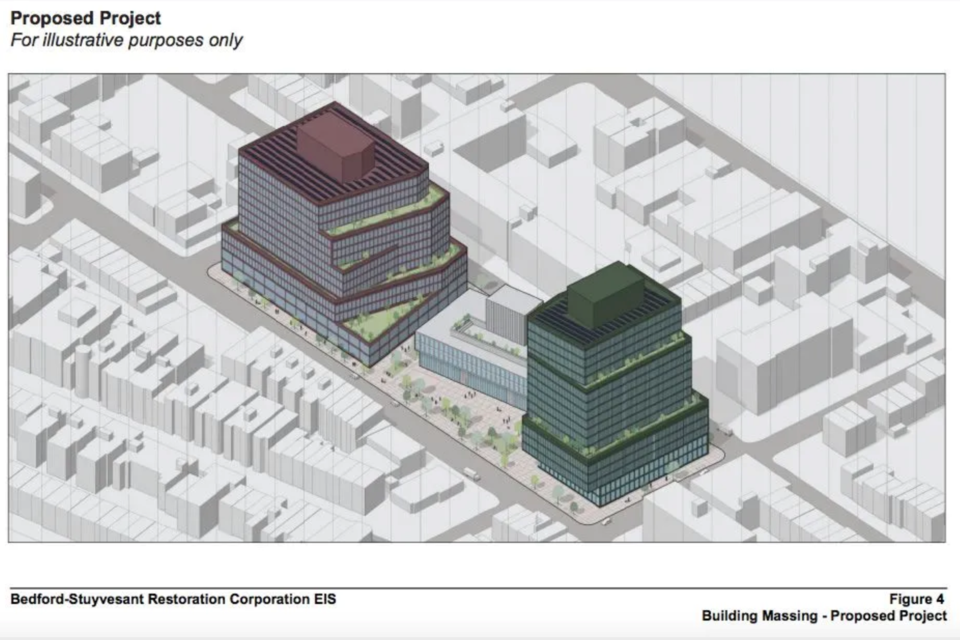Over the next decade, Bed-Stuy's Restoration Plaza plans to double the amount of available commercial office and culture space inside buildings as high as 16 stories, reports The City.
The transformation is expected to create over 840,000 square feet in available unit space, according to plans filed by The Department of City Planning.
“We’re really looking at being intentional about the type of programs and the type of business that we want to work with, that can come here and truly create not only arts and culture space and a work environment that will create jobs within creative and technological space,” said Blondel Pinnock, the president and CEO of the Bedford Stuyvesant Restoration Corporation.
The Bed-Stuy Restoration Corporation created the plaza in 1972 to battle back neighborhood blight. The core of the non-profit -- the first community development in the country -- was to tap into often ignored reservoirs of ambition and aspiration.
The new space is planned to be renamed the Restoration Innovation Campus, continuing over half a century of community building.
“We want this to be the tech hub of Central Brooklyn that’s very similar to downtown Brooklyn, that’s very similar to the Navy Yard," Pinnock said.
Construction will begin in phases, taking at least eight years according to developers. The design will be led by British architect Sir David Adjaye, also known for designing the National Museum of African American History and Culture in Washington, D.C.
The estimated cost for the first construction phase is between $150 and $175 million and the city has already committed $50 million.
The new buildings are expected to be double the size of current 1970s structures, with plans highlighting a 16 and 13-story building that will supply commercial space to existing tenants and new organizations. In addition, there will also be a four-story, 120-foot community building focused on current and cultural institutions -- including multiple gallery spaces and dance studios.
“People have grown up coming to Restoration Plaza. They’ve been coming here for, in many cases, most of their lives, so they know the state of the buildings and the real estate that we have here today,” Pinnock said.
“And for many people they’re like, yeah, it’s about time. We deserve something new and something beautiful.”




